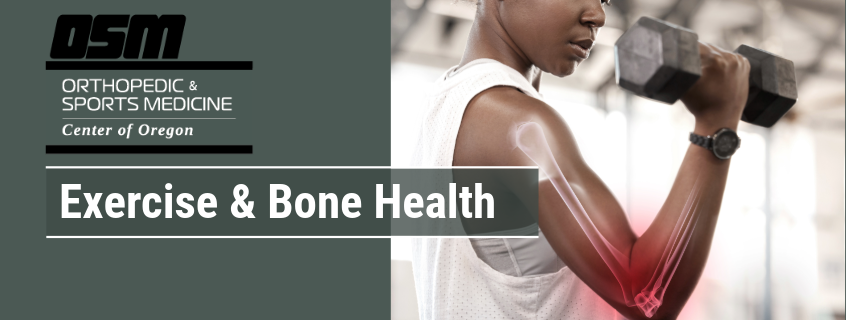Exercising and Bone Health
Article featured on OrthoInfo
Most people are familiar with many of the benefits of exercise, such as improving muscle strength and endurance, reducing the risk of heart disease and stroke, and preventing obesity. Perhaps not as well understood is the importance of regular physical activity in building and maintaining healthy bones. Inactivity causes loss of bone!
Aging, along with certain diseases and medications, can cause bones to become very weak and fragile over time — a condition called osteoporosis. It often occurs in women after menopause, and in men in older age. This bone-thinning disease puts people at greater risk for broken bones, which can seriously limit mobility and independence.
We also tend to lose muscle as we age — a condition called sarcopenia. People who develop osteoporosis or sarcopenia are considered frail: more likely to fall and more likely to break a bone.
Exercise works on bones much like it works on muscles — it makes them stronger. Exercise is important for building strong bones when we are younger, and it is essential for maintaining bone strength when we are older. Because bone is living tissue, it changes over time in response to the forces placed upon it. When you exercise regularly, your bone adapts by building more bone and becoming denser. This improvement in bone requires good nutrition, including adequate calcium and Vitamin D.
Another benefit of exercise is that it improves balance and coordination. This becomes especially important as we get older because it helps to prevent falls and the broken bones that may result.
Exercises for Strong Bones
There are many different types of exercise and they all offer health benefits. The two types that are most effective for building strong bones are weight-bearing exercise and strength-training exercise. Exercises to improve bone strength are site-specific. For example, walking can improve bone strength in the legs and spine but not in the wrist.
Postural stretching and strengthening can help prevent or decrease the amount of upper spine slumping seen in many older people. Leaning over to tie your shoes or sweeping and mopping can lead to spine fractures in people at high risk of spine fracture. Try to maintain good spine posture with all your activities.
Weightbearing Exercise
Weightbearing describes any activity you do on your feet that works your bones and muscles against gravity. When your feet and legs carry your body weight, more stress is placed on your bones, making your bones work harder. Weightbearing exercise after young adulthood can help prevent further bone loss and strengthen bone.
Examples of weightbearing exercise include:
- Brisk walking and hiking
- Jogging/running
- Dancing
- Jumping rope
- Hopscotch
- Tennis, badminton, ping pong, and pickleball
- Team sports, such as basketball, soccer, and volleyball
- Stair climbing
Higher impact activities, such as jogging and jumping rope, increase the weight on bones and provide more bone-strengthening benefits. However, people who are frail or who have already been diagnosed with thinning bone should talk to their doctors about the types of physical activity that would be best for them.
Strength-Training Exercise
Other Forms of Exercise
Non-impact exercises, such as yoga and tai chi, are not as effective at strengthening bone, but provide significant flexibility and balance training benefits.
Non-weightbearing exercises, such as swimming, cycling, and chair exercises, do not increase bone density but are excellent choices to strengthen muscles as well as the heart and lungs. If you have a musculoskeletal health condition, such as arthritis, that prevents you from doing weightbearing activities, these are good alternatives.
The Orthopedic & Sports Medicine Center of Oregon is an award-winning, board-certified orthopedic group located in downtown Portland Oregon. We utilize both surgical and nonsurgical means to treat musculoskeletal trauma, spine diseases, foot and ankle conditions, sports injuries, degenerative diseases, infections, tumors and congenital disorders.
Our mission is to return our patients back to pain-free mobility and full strength as quickly and painlessly as possible using both surgical and non-surgical orthopedic procedures.
Our expert physicians provide leading-edge, comprehensive care in the diagnosis and treatment of orthopedic conditions, including total joint replacement and sports medicine. We apply the latest state-of-the-art techniques in order to return our patients to their active lifestyle.
If you’re looking for compassionate, expert orthopedic and podiatric surgeons in Portland Oregon, contact OSM today.
Phone:
503-224-8399
Address
17355 Lower Boones Ferry Rd Suite 100A
Lake Oswego, OR 97035
Hours
Monday–Friday
8:00am – 4:30pm



